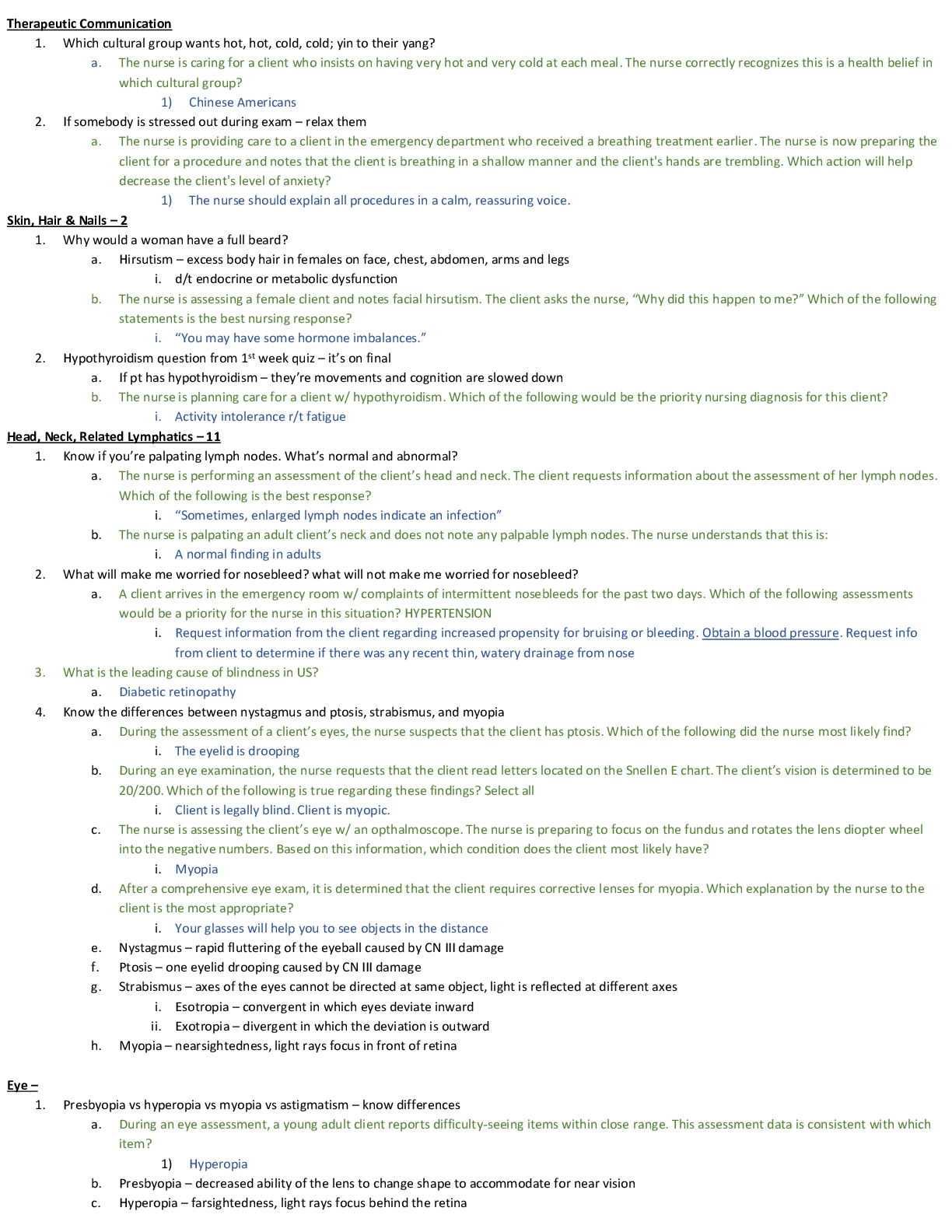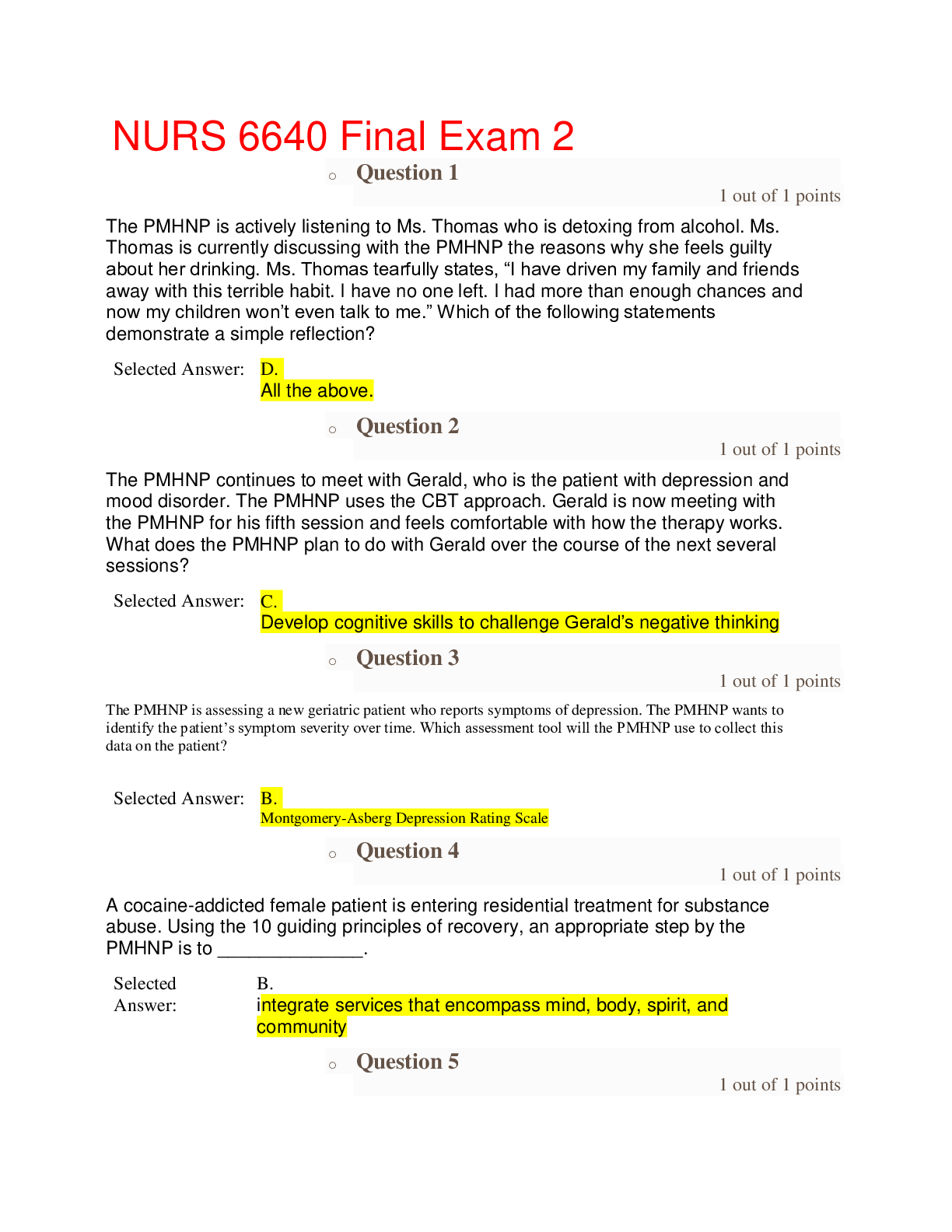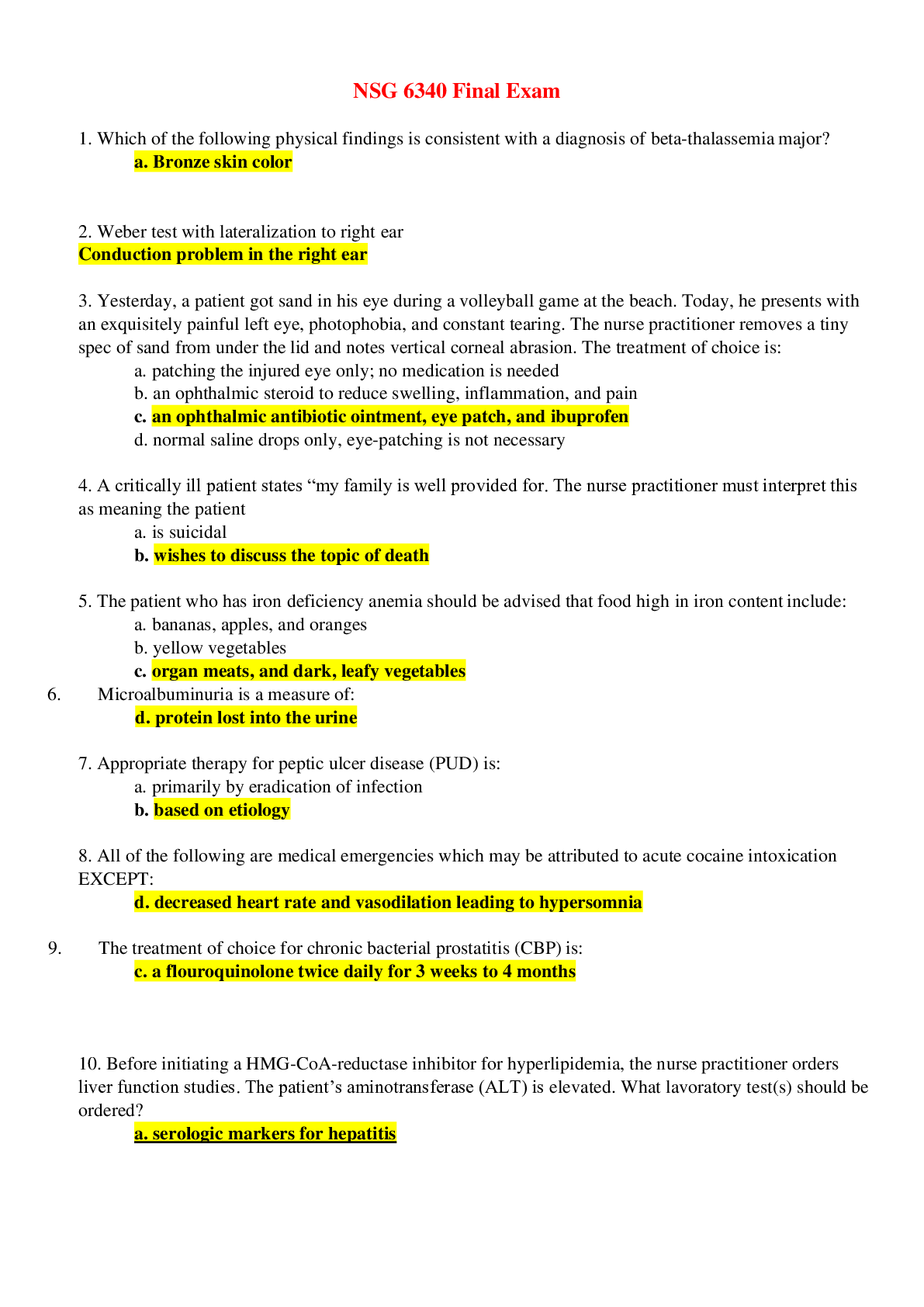PA Final Exam 2 (Questions and Answers)
Document Content and Description Below
PA Final Exam 2 (Questions and Answers) Therapeutic Communication 1. Which cultural group wants hot, hot, cold, cold; yin to their yang? a. The nurse is caring for a client who insists on having ve... ry hot and very cold at each meal. The nurse correctly recognizes this is a health belief in which cultural group? 1) Chinese Americans 2. If somebody is stressed out during exam – relax them a. The nurse is providing care to a client in the emergency department who received a breathing treatment earlier. The nurse is now preparing the client for a procedure and notes that the client is breathing in a shallow manner and the client's hands are trembling. Which action will help decrease the client's level of anxiety? 1) The nurse should explain all procedures in a calm, reassuring voice. Skin, Hair & Nails – 2 1. Why would a woman have a full beard? a. Hirsutism – excess body hair in females on face, chest, abdomen, arms and legs i. d/t endocrine or metabolic dysfunction b. The nurse is assessing a female client and notes facial hirsutism. The client asks the nurse, “Why did this happen to me?” Which of the following statements is the best nursing response? i. “You may have some hormone imbalances.” 2. Hypothyroidism question from 1st week quiz – it’s on final a. If pt has hypothyroidism – they’re movements and cognition are slowed down b. The nurse is planning care for a client w/ hypothyroidism. Which of the following would be the priority nursing diagnosis for this client? i. Activity intolerance r/t fatigue Head, Neck, Related Lymphatics – 11 1. Know if you’re palpating lymph nodes. What’s normal and abnormal? a. The nurse is performing an assessment of the client’s head and neck. The client requests information about the assessment of her lymph nodes. Which of the following is the best response? i. “Sometimes, enlarged lymph nodes indicate an infection” b. The nurse is palpating an adult client’s neck and does not note any palpable lymph nodes. The nurse understands that this is: i. A normal finding in adults 2. What will make me worried for nosebleed? what will not make me worried for nosebleed? a. A client arrives in the emergency room w/ complaints of intermittent nosebleeds for the past two days. Which of the following assessments would be a priority for the nurse in this situation? HYPERTENSION i. Request information from the client regarding increased propensity for bruising or bleeding. Obtain a blood pressure. Request info from client to determine if there was any recent thin, watery drainage from nose 3. What is the leading cause of blindness in US? a. Diabetic retinopathy 4. Know the differences between nystagmus and ptosis, strabismus, and myopia a. During the assessment of a client’s eyes, the nurse suspects that the client has ptosis. Which of the following did the nurse most likely find? i. The eyelid is drooping b. During an eye examination, the nurse requests that the client read letters located on the Snellen E chart. The client’s vision is determined to be 20/200. Which of the following is true regarding these findings? Select all i. Client is legally blind. Client is myopic. c. The nurse is assessing the client’s eye w/ an opthalmoscope. The nurse is preparing to focus on the fundus and rotates the lens diopter wheel into the negative numbers. Based on this information, which condition does the client most likely have? i. Myopia d. After a comprehensive eye exam, it is determined that the client requires corrective lenses for myopia. Which explanation by the nurse to the client is the most appropriate? i. Your glasses will help you to see objects in the distance e. Nystagmus – rapid fluttering of the eyeball caused by CN III damage f. Ptosis – one eyelid drooping caused by CN III damage g. Strabismus – axes of the eyes cannot be directed at same object, light is reflected at different axes i. Esotropia – convergent in which eyes deviate inward ii. Exotropia – divergent in which the deviation is outward h. Myopia – nearsightedness, light rays focus in front of retina Eye – 1. Presbyopia vs hyperopia vs myopia vs astigmatism – know differences a. During an eye assessment, a young adult client reports difficulty-seeing items within close range. This assessment data is consistent with which item? 1) Hyperopia b. Presbyopia – decreased ability of the lens to change shape to accommodate for near vision c. Hyperopia – farsightedness, light rays focus behind the retina d. Astigmatism – familial condition in which the refraction of light is spread over wide area of retina instead of distinct point. 1) Cornea curves more in one direction than another Light is refracted and focused on two focal points on or near retina 2) Blurred or double vision ............Continued [Show More]
Last updated: 2 years ago
Preview 1 out of 8 pages

Buy this document to get the full access instantly
Instant Download Access after purchase
Buy NowInstant download
We Accept:

Reviews( 0 )
$13.50
Can't find what you want? Try our AI powered Search
Document information
Connected school, study & course
About the document
Uploaded On
Feb 08, 2021
Number of pages
8
Written in
Additional information
This document has been written for:
Uploaded
Feb 08, 2021
Downloads
0
Views
97

























